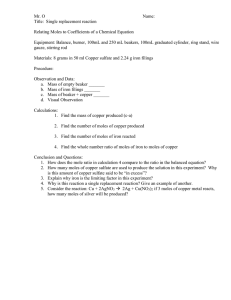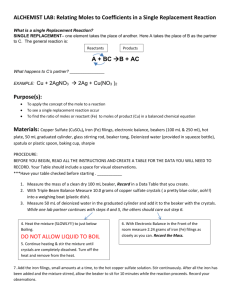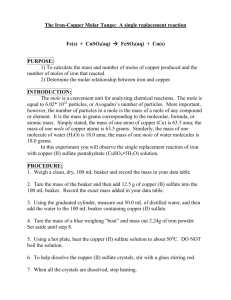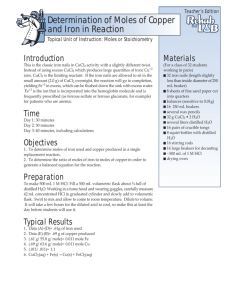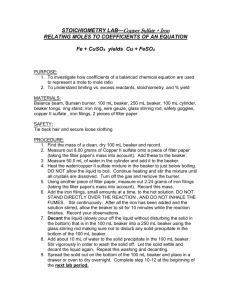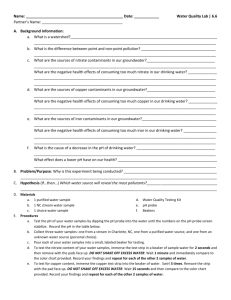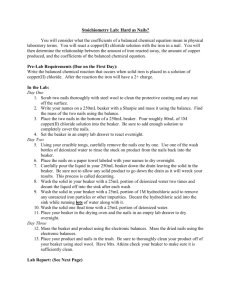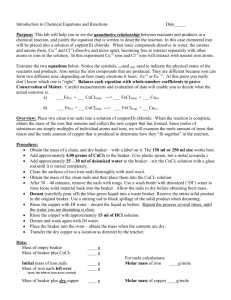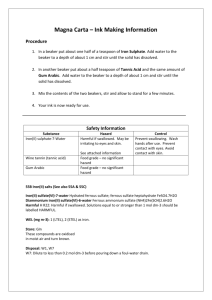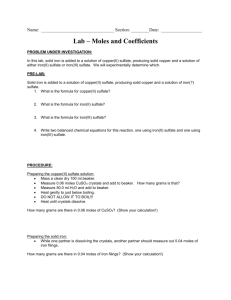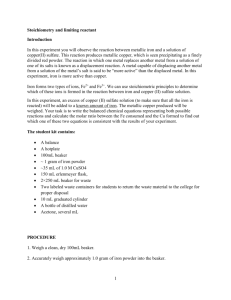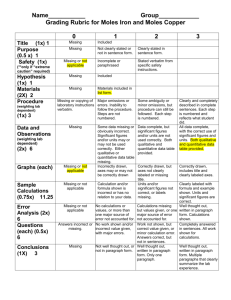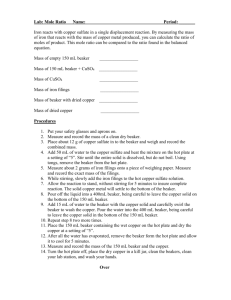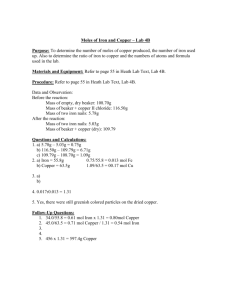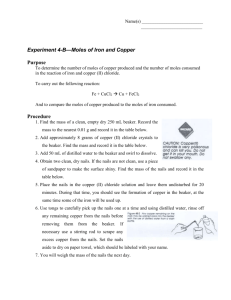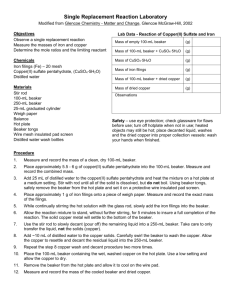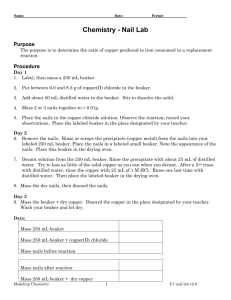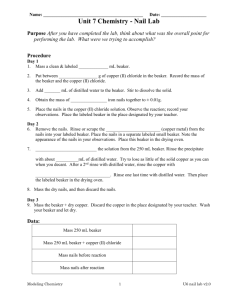Moles of Iron Lab
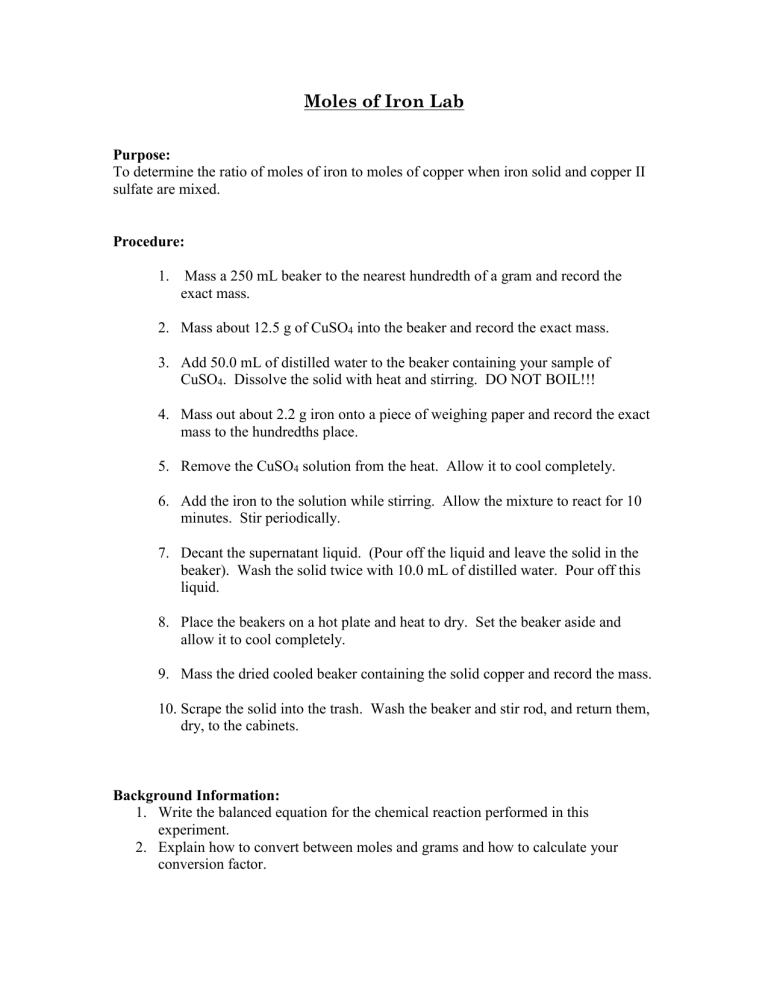
Moles of Iron Lab
Purpose:
To determine the ratio of moles of iron to moles of copper when iron solid and copper II sulfate are mixed.
Procedure:
1.
Mass a 250 mL beaker to the nearest hundredth of a gram and record the exact mass.
2.
Mass about 12.5 g of CuSO
4
into the beaker and record the exact mass.
3.
Add 50.0 mL of distilled water to the beaker containing your sample of
CuSO
4
. Dissolve the solid with heat and stirring. DO NOT BOIL!!!
4.
Mass out about 2.2 g iron onto a piece of weighing paper and record the exact mass to the hundredths place.
5.
Remove the CuSO
4
solution from the heat. Allow it to cool completely.
6.
Add the iron to the solution while stirring. Allow the mixture to react for 10 minutes. Stir periodically.
7.
Decant the supernatant liquid. (Pour off the liquid and leave the solid in the beaker). Wash the solid twice with 10.0 mL of distilled water. Pour off this liquid.
8.
Place the beakers on a hot plate and heat to dry. Set the beaker aside and allow it to cool completely.
9.
Mass the dried cooled beaker containing the solid copper and record the mass.
10.
Scrape the solid into the trash. Wash the beaker and stir rod, and return them, dry, to the cabinets.
Background Information:
1.
Write the balanced equation for the chemical reaction performed in this experiment.
2.
Explain how to convert between moles and grams and how to calculate your conversion factor.
Analysis:
1.
Calculate the mass of the copper produced.
2.
Calculate the moles of copper produced.
3.
Calculate the moles of iron used.
4.
Calculate the mole ratio of iron to copper. Get the ratio in whole numbers.
5.
Use the mole ratio to write the balanced chemical equation for the reaction.
( Hint: you are using iron II)
6.
Did all of the copper II sulfate solution react in this reaction? Did all of the iron react? Explain your reasoning.
7.
Calculate the % error. The accepted molar ratio for this reaction is one mole iron for every one mole copper.
8.
Write a brief conclusion analyzing your results. Summarize overall what you have discovered in this lab. If your percent error value is large, you should give a suggestion for what factors may have contributed to that error.

